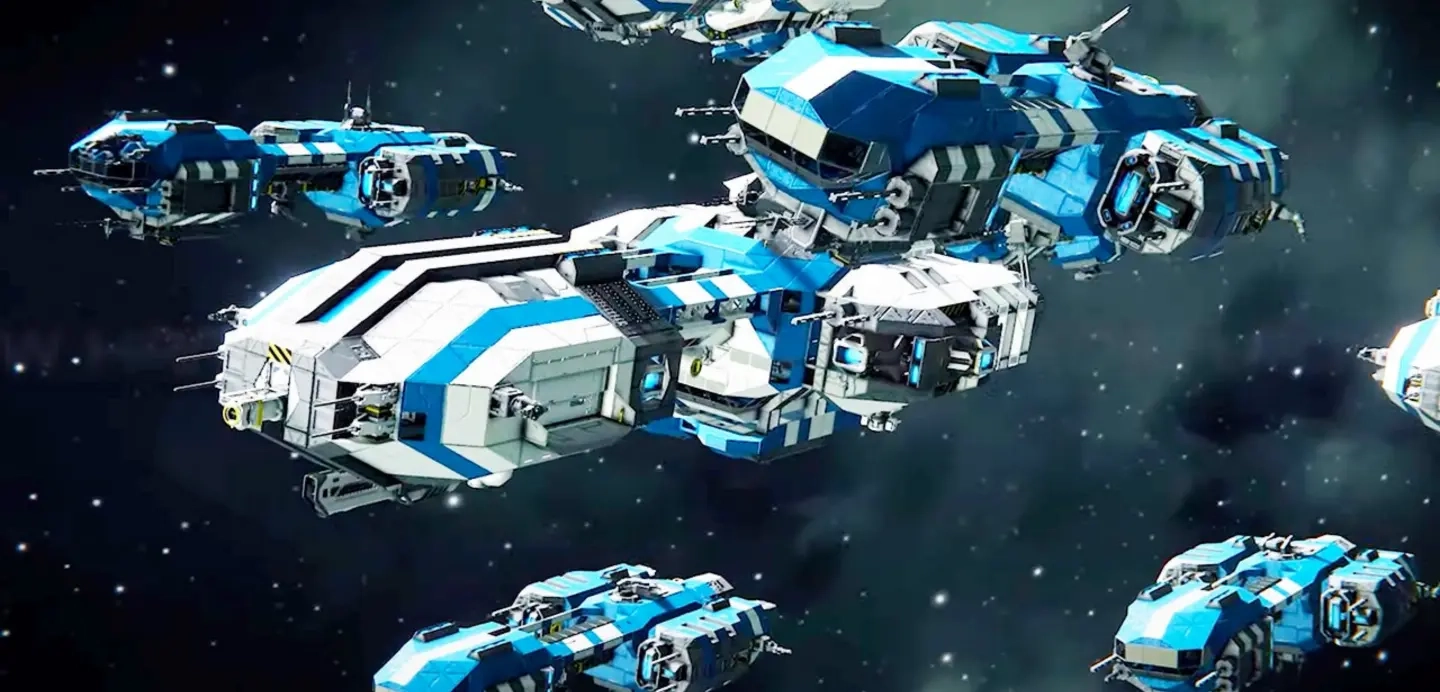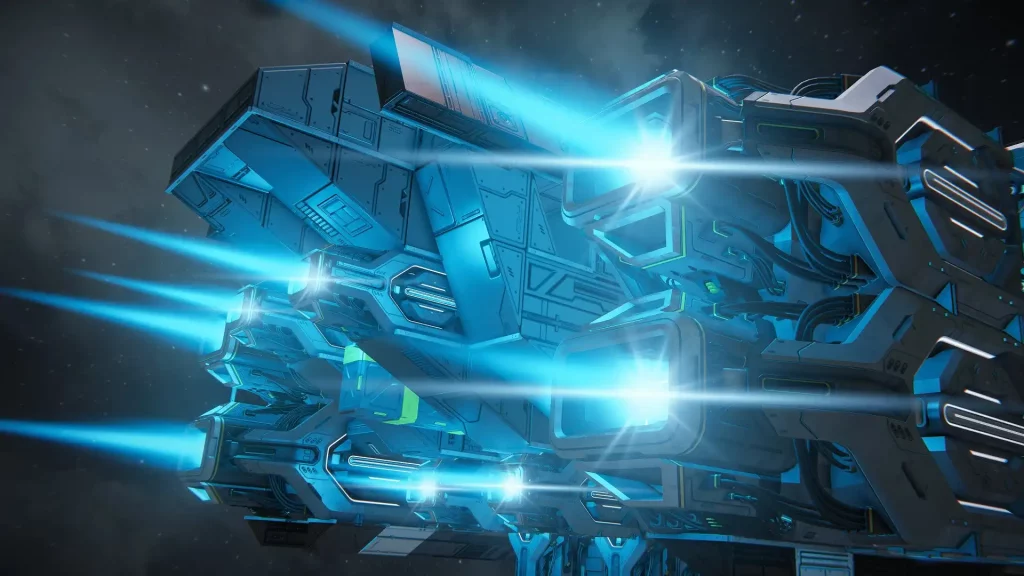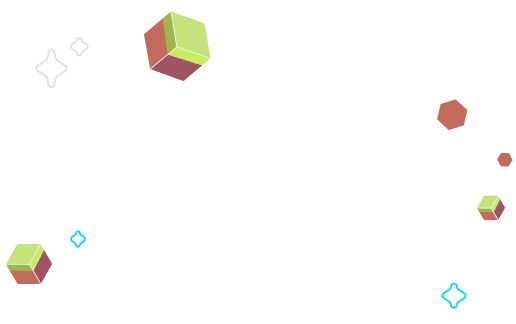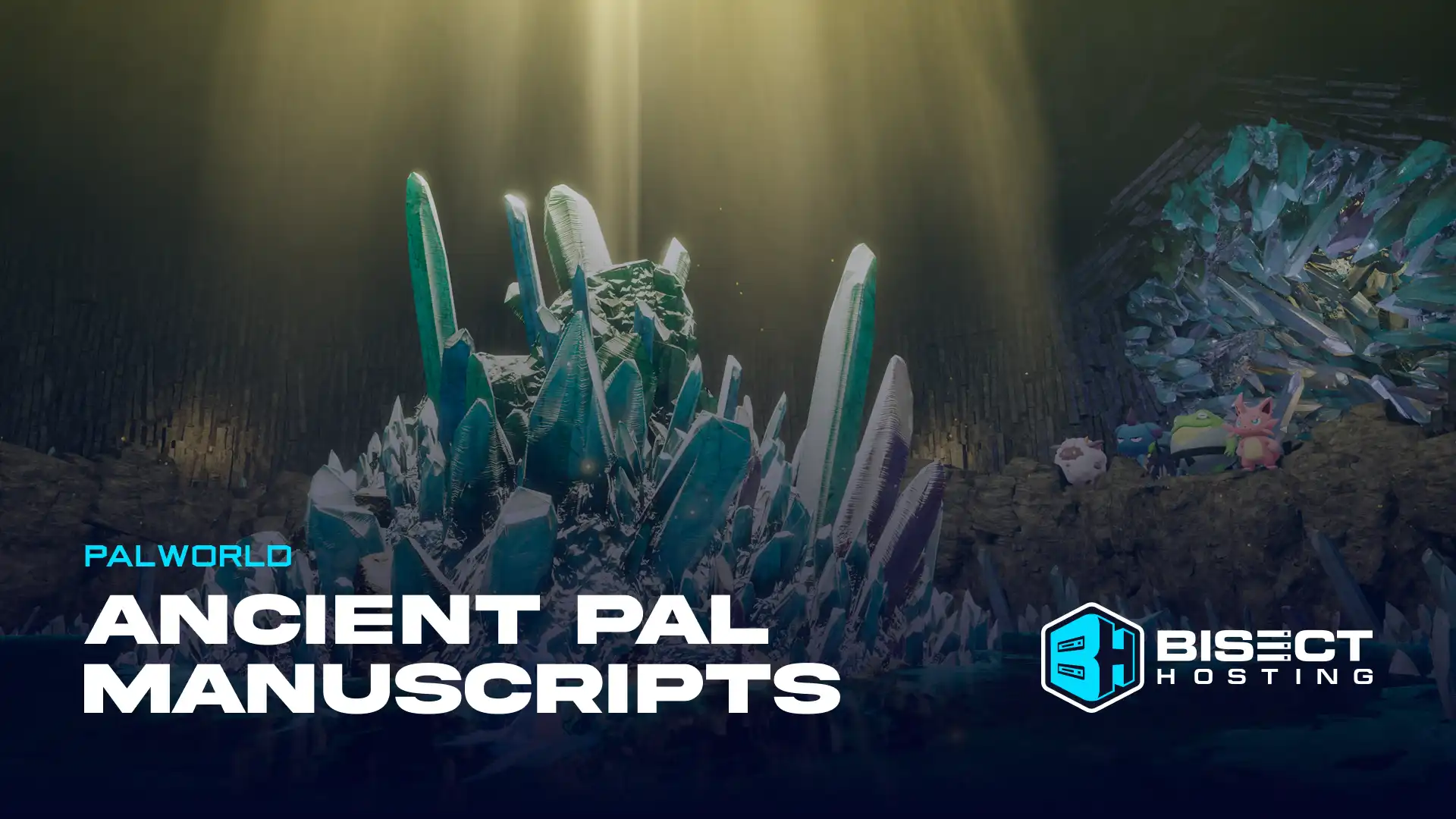
Space Engineers Thrusters Guide: All Types, Stats, How to Use, & More
Posted on by
Building a spaceship in Space Engineers requires careful consideration of the vessel’s various components. One notable piece that should be on your ship is the thruster. Otherwise, it’s going to be a floating brick in space. So, here are the details you must know to build and use thrusters in Space Engineers properly and all of the many options to propel your ship to your next adventures.
 Like its real-life counterpart, Thrusters in Space Engineers are the primary means for a ship’s movement. Similar to house building in Terraria, strategic placement is essential for these components. With proper placement, Thrusters only provide direct linear thrust. However, thrusters don’t apply torque or cause ship rotation.
Like its real-life counterpart, Thrusters in Space Engineers are the primary means for a ship’s movement. Similar to house building in Terraria, strategic placement is essential for these components. With proper placement, Thrusters only provide direct linear thrust. However, thrusters don’t apply torque or cause ship rotation.
Space Engineers Thrusters Guide
 Like its real-life counterpart, Thrusters in Space Engineers are the primary means for a ship’s movement. Similar to house building in Terraria, strategic placement is essential for these components. With proper placement, Thrusters only provide direct linear thrust. However, thrusters don’t apply torque or cause ship rotation.
Like its real-life counterpart, Thrusters in Space Engineers are the primary means for a ship’s movement. Similar to house building in Terraria, strategic placement is essential for these components. With proper placement, Thrusters only provide direct linear thrust. However, thrusters don’t apply torque or cause ship rotation.
Using Thrusters
As mentioned earlier, thrusters are vital functional blocks for all ships Space Engineers ships, particularly those requiring flight. A requirement of one thruster block facing the opposite direction of the desired path can generate movement. Note that improper thruster placement can cause tailspinning. Thrusters in Space Engineers also have a maximum speed of 100 meters per second (360 kilometers per hour). Additionally, each thruster type has advantages and shortcomings in various environments.Thruster Types
Space Engineers has three primary thruster types, which are the following:Ion Thruster
An electric-based thruster that always consumes a minimum of 0.002kW (2 Watts) regardless of its current operational state. The Ion Thruster has a power consumption that scales linearly with an efficacy that’s inversely dependent on the current atmosphere’s density. With these traits, ion thrusters are often ideal for space exploration.Models and Stats
|
Thruster |
Block Size | Dimensions (W, H, L) | Volume | Max Thrust | Mass | Max Power Consumption | Max Hydrogen Consumption | Thrust-to-Mass | Thrust-to-Size | Thrust-to-Power |
Flame Length |
|
Ion Thruster |
Large | 1,1,2 | 31.25 m3 | 345.6 kN | 4,380 kg | 3.36 MW | N/A | 79 N/kg | 11 kN/m3 | 103 kN/MW |
6.6 m |
|
Ion Thrusters |
Small | 1,1,2 | 0.25 m3 | 14.4 kN | 121 kg | 0.2 MW | N/A | 119 N/kg | 58 kN/m3 | 72 kN/MW |
0.69 m |
|
Large Ion Thruster |
Large | 3,2,4 | 375 m3 | 4,320 kN | 43,200 kg | 33.6 MW | N/A | 100 N/kg | 12 kN/m3 | 129 kN/MW |
11.9 m |
|
Large Ion Thruster |
Small | 3,2,4 | 3 m3 | 172.8 kN | 721 kg | 2.4 MW | N/A | 240 N/kg | 58 kN/m3 | 72 kN/MW | 1.98 m |
Hydrogen Thruster
All thrusters under this model require a Conveyor connection to a Hydrogen source (e.g., Hydrogen Tank and Oxygen Generator). The Hydrogen Thruster also only consumes hydrogen as a power source, unlike the Ion Thruster, which requires electricity. This thruster type can be good in space and different atmospheres. However, it can also be the most expensive to maintain out of the three thruster types.Models and Stats
|
Thruster |
Block Size | Dimensions (W, H, L) | Volume | Max Thrust | Mass | Max Power Consumption | Max Hydrogen Consumption | Thrust-to-Mass | Thrust-to-Size | Thrust-to-Power |
Flame Length |
|
Hydrogen Thruster |
Large | 1,1,1 | 15.625 m3 | 1,080 kN | 1,420 kg | N/A | 803 L/s | 761 N/kg | 69 kN/m3 | 864 kN/MW |
4.75 m |
|
Hydrogen Thrusters |
Small | 1,1,1 | 0.125 m3 | 98.4 kN | 334 kg | N/A | 80 L/s | 295 N/kg | 787 kN/m3 | 787 kN/MW |
0.71 m |
|
Large Hydrogen Thruster |
Large | 3,3,3 | 421.875 m3 | 7,200 kN | 6,940 kg | N/A | 4,820 L/s | 1,037 N/kg | 17 kN/m3 | 960 kN/MW |
15.15 m |
|
Large Hydrogen Thruster |
Small | 3,3,3 | 3.375 m3 | 480 kN | 1,222 kg | N/A | 386 L/s | 393 N/kg | 142 kN/m3 | 800 kN/MW |
3.32 m |
Atmospheric Thruster
A thruster model that depends on the atmosphere’s density. So, it’s a good choice for planetary exploration. The Atmospheric Thrust also has the most powerful thrust among the different thruster types. But other thruster models can beat its prowess during extended use.Models and Stats
|
Thruster |
Block Size | Dimensions (W, H, L) | Volume | Max Thrust | Mass | Max Power Consumption | Max Hydrogen Consumption | Thrust-to-Mass | Thrust-to-Size | Thrust-to-Power |
Flame Length |
|
Atmospheric Thruster |
Large | 1,1,3 | 46.875 m3 | 648 kN | 4,000 kg | 2.4 MW | N/A | 162 N/kg | 14 kN/m3 | 270 kN/MW | 3.59 m |
|
Atmospheric Thrusters |
Small | 1,1,3 | 0.375 m3 | 96 kN | 699 kg | 0.6 MW | N/A | 137 N/kg | 256 kN/m3 | 160 kN/MW | 0.68 m |
|
Large Atmospheric Thruster |
Large | 3,3,5 | 703.125 m3 | 6,480 kN | 32,970 kg | 16.8 MW | N/A | 197 N/kg | 9 kN/m3 | 386 kN/MW | 11.23 m |
|
Large Atmospheric Thruster |
Small | 3,3,5 | 5.625 m3 | 576 kN | 2,948 kg | 2.4 MW | N/A | 195 N/kg | 102 kN/m3 | 240 kN/MW | 2.21 m |
Requirements
Survival Mode players in Space Engineers can enable Progression, an optional game mechanic. If you do, you must build a Cockpit or Remote Control to unlock Atmospheric and Ion Thrusters. Also, build a Hydrogen Tank and an O2/H2 Generator to unlock Hydrogen Thrusters.Thruster Damage and Immunity
A map or server can enable a mechanic called Thruster Damage. If enabled, Thrusters in Space Engineers can deal damage to blocks, particularly those directly behind. However, thruster flames that consume small grids don’t damage blocks with deformation ratios below 25%. The blocks immune to Thruster Damage are the following:Large Blocks
- Blast Doors
- Blast Door Corner
- Blast Door Corner Inverted
- Blast Door Edge
- Control Stations
- Drill
- Heavy Armor Corner Square Block
- Heavy Armor Half Corner Block
- Heavy Armor Half-Sloped Corner
- Heavy Armor Half-Sloped Corner Base
- Heavy Armor Sloped Corner
- Wheel Suspension 1x1 Right
- Wheel Suspension 1x1 Left
- Wheel Suspension 3x3 Right
- Wheel Suspension 3x3 Left
- Wheel Suspension 5x5 Right
- Wheel Suspension 5x5 Left
Small Blocks
- Blast Door Corner Inverted
- Blast Door Edge
- Cockpit
- Drill
- Heavy Armor Corner Square Block
- Heavy Armor Half Corner Block
- Half Slope Inv. Heavy Armor
- Heavy Armor Half-Sloped Corner
- Heavy Armor Half-Sloped Corner Base
- Heavy Armor Sloped Corner
- Heavy Armor Block
- Heavy Armor Corner
- Heavy Armor Inv. Corner
- Heavy Armor Round Corner
- Heavy Armor Round Inv. Corner
- Heavy Armor Round Slope
- Heavy Armor Slope
- Wheel Suspension 1x1 Right
- Wheel Suspension 1x1 Left
- Wheel Suspension 3x3 Right
- Wheel Suspension 3x3 Left
- Wheel Suspension 5x5 Right
- Wheel Suspension 5x5 Left
Create your own
Space Engineers server
Space Engineers server
Choose a plan, pick a game, and play with your friends!
Join our Newsletter
Subscribe for the latest updates on all things gaming!
How would you rate this blog?
Share your opinion and help us make our blogs even better!
Didn't like
Neutral
Liked

Need a game server?
Rent a game server where you and your friends can play privately with low latency and custom settings. Choose from 90+ games, invite people from around the globe, and enjoy private matches, or build your own online community with your own rules.

Relevant Blogs

GET THE INSIDE SCOOP!
Join our email for updates on our hosted games, company news and exclusive deals. Stay in the loop!
















